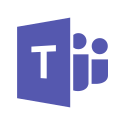
How to Onboard Your Team to the 4Ls Retrospective (With Examples)

Most Agile retrospectives follow the same old script:
"What went well?"
"What didn’t?"
"What should we improve?"
But teams often leave these meetings feeling uninspired, unheard, or stuck in the same cycles.
That makes the 4 L’s Retrospective such a popular template among Agile teams. It’s a simple yet powerful framework that structures feedback constructively while maintaining balanced, engaging, and action-driven discussions.
What Are the 4Ls?
Liked: What worked well? (Celebrate wins and good performance)
Learned: What new insights did we gain? Focus on growth and new opportunities.
Lacked: What was missing? (Identify gaps and areas of improvement)
Longed For: What would’ve made this even better? (Identify unmet needs and aspirations)
Unlike traditional retrospective meetings, the 4L’s retrospective template:
✅ Encourages balanced feedback (not just complaints)
✅ Drives actionable improvements (not just talk)
✅ Works for any team (remote, hybrid, or in-office)
At Team O’Clock, we’ve helped dozens of teams adopt the 4Ls to boost collaboration, morale, and continuous improvement. Below, we break down five real-world scenarios where the 4Ls shine with practical tips to onboard your team successfully.
5 Case Studies for Onboarding Teams to the 4Ls Retrospective
1. "Work Complete" Retrospective
When to run it: After a major project, sprint, or product launch.
How 4L’s helps:
Liked: "Our cross-team collaboration was seamless."
Learned: "We now understand the client’s workflow better."
Lacked: "We needed clearer acceptance criteria early on."
Longed For: "Automated testing would’ve saved 20 hours."
Why this matters:
✔ Boosts morale by highlighting successes
✔ Identifies process gaps before the next project
✔ More engaging than a generic "start/stop/continue" retro
Team O’Clock Pro Tip: Use sticky notes (physical or digital) to gather anonymous feedback first. This ensures quieter voices are heard.
2. "Year Summary" Retrospective
When to run it: Reflecting on a year (or quarter) of work.
How 4L’s helps:
Liked: "We reduced deployment time by 40%."
Learned: "Remote pair programming improved code quality."
Lacked: "No dedicated UX support slowed UI iterations."
Longed For: "More innovation time outside firefighting."
Why this matters:
✔ Aligns long-term goals (roadmap planning, skill development)
✔ Surfaces systemic issues (not just sprint-level problems)
Team O’Clock Pro Tip: Combine this with a ‘Start/Stop/Continue’ exercise to prioritize next-year actions.
3. Futurespective (Imagining 4Ls in 3-6 Months)
When to run it: Planning a future initiative (new product, process, or organizational change).
How 4L’s helps:
Ask: "What do we want our future 4L’s to be?"
Liked: "Our new CI/CD pipeline is frictionless."
Learned: "We’ve mastered the new analytics tool."
Lacked: "No more last-minute scope creep."
Longed For: "Documentation is now up-to-date."
Why this matters:
✔ Proactively shapes success (vs. reacting to failures)
✔ Builds shared vision across the team
Team O’Clock Pro Tip: Run this before kickoffs. It’s a great way to align on success metrics.
4. "Work in Progress" Retrospective
When to run it: Mid-project check-in for a multi-sprint initiative.
How 4L’s helps:
Liked: "Daily standups keep blockers visible."
Learned: "API rate limits require throttling."
Lacked: "No clear owner for design decisions."
Longed For: "A dedicated QA resource would accelerate us."
Why this matters:
✔ Prevents mid-project derailments
✔ Keeps morale high by acknowledging progress
Team O’Clock Pro Tip: Timebox each 4L to 10 minutes. This keeps the discussion focused and actionable.
5. Post-Mortem / Incident Retrospective
When to run it: After a major incident or project failure.
How 4L’s helps:
Liked: "Communication was swift during the outage."
Learned: "Our monitoring doesn’t cover edge cases."
Lacked: "No escalation path for off-hours issues."
Longed For: "Better runbooks would’ve prevented this."
Why this matters:
✔ Avoids blame culture by focusing on systemic fixes
✔ Balances critique with positives ("We handled X well, but Y needs work.")
Team O’Clock Pro Tip: Assign owners to each ‘Lacked/Longed For’ item to ensure follow-through.
Run Efficient Retros With The 4 L’s Template
The 4L’s Retrospective adapts to any team, any context, making it a must-have for Agile teams.
To onboard your team successfully:
1️⃣ Start small (e.g., a sprint retro before a big project).
2️⃣ Use a facilitator (especially in the early stages) to guide discussions.
3️⃣ Close with action items (e.g., "Who owns fixing what we ‘Lacked’?").
At Team O’Clock, we’ve seen teams transform retrospectives from boring meetings into engaging, outcome-driven sessions with the 4L’s.
Try it in your next retro and see the difference!
“Great overall experience and highly recommended if you are running an Agile team.”
Arnaud, Sales Manager

More articles to check

Assist your team's growth with our partnership program:








